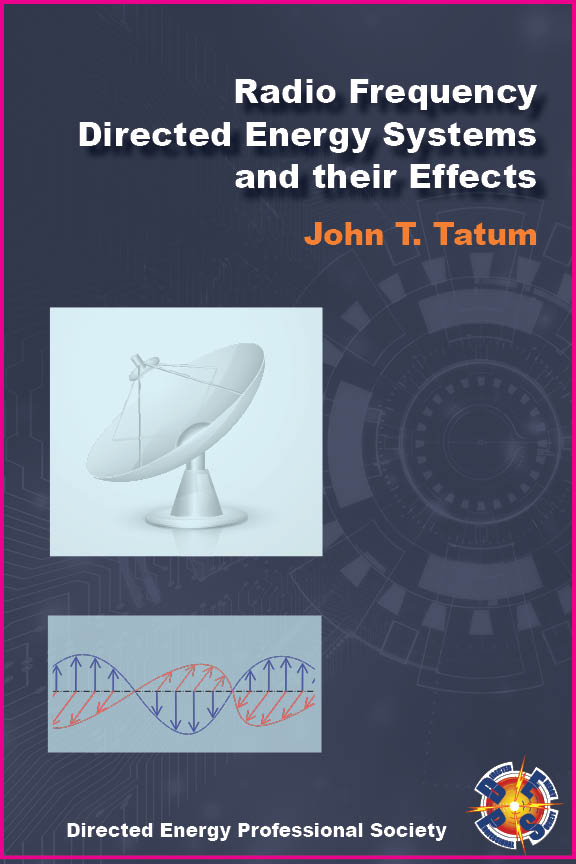Acknowledgments........................................................................................................................ ix Preface.......................................................................................................................................... xi List of Figures............................................................................................................................. xii Chapter 1. Introduction: Radio Frequency/Microwave (RF/M) Directed Energy (DE) Systems and Their Applications............................................................. 1 1.1. Nonkinetic energy systems (NKESs): electromagnetic systems/DE systems.................. 1 1.2. What are high-power RF/M DE systems?........................................................................ 5 1.2.1. Electromagnetic spectrum and RF/M DE system frequencies....................................... 8 1.2.2. Major components of an RF/M DE system. ...................................................................9 1.3. How RF/M DE systems are like traditional EA jammers and nuclear-created EM pulse (NEMP).................................................................................. 14 1.3.1. RF/M DE vs traditional EA........................................................................................... 14 1.3.2. RF/M DE vs EMP.......................................................................................................... 16 1.3.3. Potential applications of RF/M DE systems.................................................................. 20 Chapter 2. Capabilities and Limitations..................................................................................... 23 Chapter 3. RF/M DE Coupling to Target and Effects................................................................ 27 3.1. Typical unconventional EA attack scenario with RF/M DE............................................. 27 3.2. RF/M DE propagation in atmosphere............................................................................... 29 3.2.1. Atmospheric structure.................................................................................................... 30 3.2.2. Atmospheric effects....................................................................................................... 37 3.2.3. Summary........................................................................................................................ 44 3.3. RF/M de coupling paths to target electronics: intentional (front-door) and unintentional (back-door) ports of entry (POEs).............................................................. 45 3.4. Estimated target effect/failure level.................................................................................. 46 3.5. Probability of target failure............................................................................................... 48 3.6. RF/M DE effects on electronic components..................................................................... 50 3.6.1. Component upset and damage....................................................................................... 50 Chapter 4. RF/M DE Effects on Electronic Systems.................................................................. 55 4.1. DoD RF/M DE effects assessment methodology.............................................................. 55 4.2. Free-field effects test vs direct injection effects test on systems...................................... 58 Chapter 5. RF/M DE Modeling and Simulation......................................................................... 63 5.1. RF/M DE models/tools..................................................................................................... 63 5.2. Engagement models and simulations................................................................................ 65 5.2.1. Directed Radio Frequency Energy Assessment Model (DREAM)................................ 66 5.2.2. Radio Frequency Propagation and Target Effects Code (RFPROTEC)......................... 68 5.2.3. Joint RF/M Effectiveness Model (JREM)...................................................................... 70 Chapter 6. RF/M DE System Development: RF/M DE Lethality.............................................. 71 6.1. RF/M DE system development methodology.................................................................... 71 6.2. Notional RF/M DE system design example using the Radio Frequency Directed Energy System Design Tool (RFDEDT)............................................................ 74 Chapter 7. RF/M DE Protection/Hardening—Survivability...................................................... 79 7.1. RF/M DE protection methodology and hardening margins.................................................... 80 7.2. RF/M DE hardening example............................................................................................. 81 7.2.1. RF/M DE threat environment.......................................................................................... 82 7.2.2. System functional analysis.............................................................................................. 83 7.2.3. Failure analysis logic tree................................................................................................ 85 7.2.4. Entry path characterization.............................................................................................. 85 7.2.5. Probability of failure (damage) vs. incident power density and RF/M DE threat range.................................................................................................... 86 7.2.6. Hardening requirements for example helicopter............................................................. 87 Chapter 8. Summary...................................................................................................................... 89 Appendix A. Radio Frequency Directed Energy System Design Tool (RFDEDT) Methodology and Models ..........................................................................................97 Appendix B. Examples of RF/M DE Systems ..............................................................................105 Appendix C. Port of Entry Effective Areas and Component Failure Models in DREAM.................................................................................................. 107 Appendix D. Effective Area Formulas for POE (Antennas)......................................................... 119 Appendix E. Effective Area Formulas for Back-Door POEs........................................................ 121 Appendix F. Transmission Lines................................................................................................... 123 Appendix G. Shielding Materials Attenuation.............................................................................. 125 Appendix H. RF/M Bands (Radar Community)........................................................................... 127 Appendix I. Glossary.................................................................................................................... 129 Appendix J. Acronyms................................................................................................................. 137 Index. ............................................................................................................................................ 141 | ||||||||||
| Copyright © Directed Energy Professional Society | DHTML/JavaScript Menus by OpenCube | |

